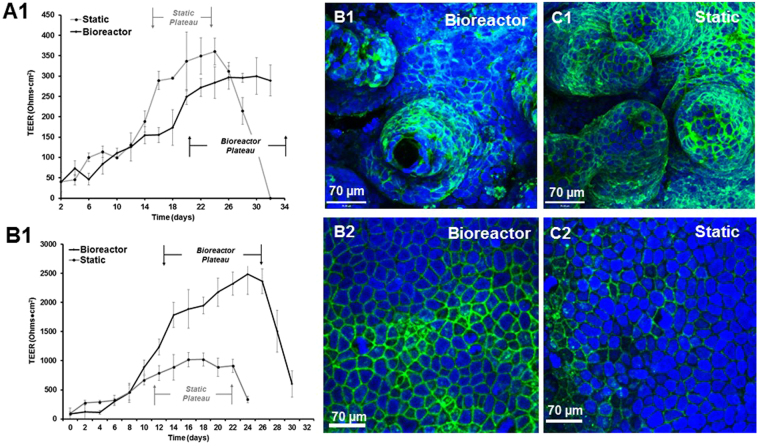Figure 3.
TEER measurements of Caco-2 monolayers over 32 days in the bioreactors and under static conditions (N = 6), on flat scaffolds and in 3-D scaffolds. For 3-D scaffolds, in both conditions, TEER increases steadily over the course of the culture until a peak or ‘plateau’ is reached, which is typically representative of an intact barrier for absorption studies (A1). The plateau takes longer to reach in the bioreactors, but it is also maintained for almost two weeks; in contrast in the static conditions the plateau lasts for one week. With flat scaffolds, TEER increases in the bioreactor by approximately 10 fold. TEER also increases in the static reactors, but at a lower magnitude than in bioreactors (B1). Scaffolds were also stained for tight junctions with Claudin-1 (B,C). 3-D bioreactor scaffolds have less staining at the base than static scaffolds, and conversely flat bioreactor scaffolds have more staining than the static scaffolds.

